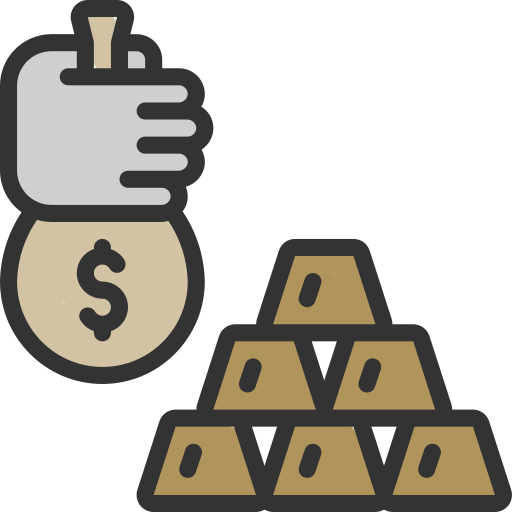
“Question: I’d like to invest in gold but I’ve got really hung up on when is the right time to buy, suffering from a bad case of analysis paralysis. I thought we were at a market high at $1800 and so I waited and now it’s at $2050 – what would you do?”
 Bullion.Directory’s Ask Ally Service
Bullion.Directory’s Ask Ally Service
By Alison Macdonald
Commercial Editor at Bullion.Directory
Martin in London is asking what is the best time for an investor to buy or sell gold – and while in a perfect world I’d buy gold in the early 1970s, time travel is impractical when it comes to an average investor.
In the absence of owning a modified Delorean, the next answer would be to buy gold as low as possible and sell as high as you can.
This however demands timing and market knowledge – and has a nasty habit of stopping regular retail investors from buying in the first place – much as Martin has discovered.
Always waiting for a lower price to enter, or missing market highs to sell can be a curse.
So, to answer Martin properly, I need to first ask – are you a trader?
Gold Investment Strategies: Are You a Trader or Holder?
Investing in gold – that time-honored bastion of financial security – consists of two main camps.
On one end of the spectrum, we have the traders, individuals who ride the waves of market fluctuations, seeking to capitalize on gold’s price movements.
Their success hinges on astute timing – buying low and selling high in quick succession, often within narrow time frames. This realm is dynamic (ie stressful), and done well it is driven by a blend of technical analysis, market sentiment, and every so often, a chunk of good fortune.
On the opposite end, we find the long-term holders.
I’m firmly in this group – at least when it comes to gold.
Buy-and-hold investors embody the adage “slow and steady wins the race.” Their approach isn’t about the quick wins but about enduring value, something which gold in particular is famed for.
They view gold not just as a commodity to be traded, but as a fundamental part of a well-diversified, balanced portfolio.
For them, gold is a hedge against inflation, a bastion against economic storms – and their focus is not on ‘when’ to buy or sell in the short term, but on the strategic value of holding gold over years, or even decades.
Thus, the question, “What time is best to buy or sell gold?” isn’t one-size-fits-all.
Like everything in the gold investing world, it’s a nuanced question and depends significantly on which of these paths you lean more towards.
For traders, timing is a crucial element of strategy, requiring a keen eye on market trends and economic indicators. On the other hand for long-term holders, timing of the purchase is often overshadowed by the broader benefits of sustained gold ownership.
Today I’m going to be looking at each of these strategies in more detail – agile trader or steadfast long-term investor.
Whether you’re looking to make quick gains or ensure long-term financial security, understanding these strategies is key to making informed decisions about your gold investments.

The Trader: Understanding Market Timing
For traders in the gold market, timing isn’t just a factor – it’s the crux of their entire strategy. The ability to discern when to dive into the market and when to pull back is what separates successful traders from the rest.
Whether the trader is simply trading the gold:silver ratio and jumping between precious metals, or combining gold trades with a larger range of commodites, currencies and stocks – timing maximizes profits and minimizes losses.
Successful traders utilize a wide range of signals and custom tools, including the following:
Short-term Market Trends
A trader must have a finger on the pulse of the market’s heartbeat. This involves a close watch on daily, even hourly, price movements.
These short-term trends are influenced by a myriad of factors – from geopolitical tensions and economic data releases to market sentiment and currency fluctuations. The challenge here is not just to observe these trends, but to interpret them correctly and predict their impact on gold prices.
Economic Indicators
Interest rates, inflation reports, employment figures, GDP growth, and the actions of market-making bullion traders – are just a few of the indicators that can cause ripples in the gold market.
A savvy trader must not only understand these indicators but also anticipate their release and potential impact.
Seasonal Fluctuations
Gold, like many commodities, is subject to seasonal trends.
Certain times of the year, like wedding seasons in major gold-consuming countries like India or the end-of-year holiday season in China and the Middle East, can drive up demand and affect prices.
Understanding these seasonal patterns can give traders an edge, allowing them to time their buying and selling with more precision.
Tools for Traders
To navigate these waters, traders employ a variety of tools such as technical analysis software, real-time news feeds, and economic calendars are staples in a trader’s arsenal.
These tools help in identifying trends, predicting market movements, and making informed decisions quickly – and the better a gold trader gets at reading these trends through add-on plug-ins and technical indicators, the more their decisions can be based on hard data, than hunches, feelings and emotion.
Trading is a complex, dynamic process, requiring a blend of knowledge, intuition, and the right tools. With these in hand, a trader can turn the sometimes volatile waves of the gold and precious metals markets into opportunities for profit beyond simple capital appreciation.
Long-term Holders: Value Versus Trade Opportunities
![]() When it comes to long-term holding of gold, the though process significantly from the high-paced world of trading.
When it comes to long-term holding of gold, the though process significantly from the high-paced world of trading.
For long-term investors like me, it’s less about the timing of the purchase and more about the enduring value of holding gold itself. Now don’t get me wrong I’m not a fan of buying when gold looks bubbly and even on a bull run I prefer to ‘buy the dip’ but that’s about as close to timing as I veer…
The Less Critical Nature of Timing
Unlike traders, long-term gold holders aren’t looking to capitalize on short-term market fluctuations.
Instead, their focus is on the enduring qualities of gold as a store of value – and this perspective means that the precise timing of every purchase becomes far less critical.
Whether gold is bought at a market high or low, its value over decades tends to smooth out the bumps, offering a stable, long-term investment.
Gold’s Role in Diversification
Gold shines as a tool for portfolio diversification. Its historical tendency to hold value, or even appreciate during times of economic downturn, makes it a counterbalance to more volatile assets.
It’s hardly surprising gold is used to hold generational and national wealth. By including gold in their portfolio, long-term investors can mitigate risk and add a layer of security against market downturns and inflation.
Focus on Long-term Gains and Stability
The hallmark of long-term gold holding is the pursuit of stability and steady gains over time.
While other assets can offer quick returns (and equally quick losses), gold’s trajectory is often more gradual. For those with a long-term horizon, this stability is a valued characteristic, allowing them to plan for future financial goals with greater certainty.
Now that’s not to say by holding gold, you can’t also go and make some risky trades – in fact that’s the very reason even high-risk investors like to hold at least some gold.
In essence, for long-term gold investors, the act of including gold in their portfolio is a strategic decision aimed at capitalizing on its historical reliability and stability.
The exact timing of entry into the market, while not irrelevant, takes a backseat to the overarching goal of long-term asset preservation and growth – which brings me onto…
Dollar Cost Averaging: The Strategy That Neutralizes Timing
 One effective strategy that stands out for both traders and long-term holders, but especially for the latter, is dollar cost averaging.
One effective strategy that stands out for both traders and long-term holders, but especially for the latter, is dollar cost averaging.
This approach plays a crucial role in neutralizing the often daunting task of timing the market.
Dollar cost averaging involves making regular, consistent investments in gold over a period, regardless of its price at any given time.
To help illustrate the potential for growth using this method, we have a dollar cost averaging calculator / gold accumulation plan calculator here.
By using dollar cost averaging, investors spread their purchases, buying more when prices are low and less when prices are high. This strategy can be particularly useful in the gold market, where short-term price fluctuations are common.
The primary benefit of dollar cost averaging is its ability to reduce the impact of market volatility.
Instead of trying to time the market perfectly, which is notoriously difficult even for seasoned investors, this approach smooths out the investment cost over time. It offers a more measured entry into the gold market, which can be particularly appealing for those who are risk-averse or new to gold investing.
Over time, dollar cost averaging can lead to a more stable investment outcome.
By continually investing a fixed amount, investors avoid the potential pitfalls of making large, ill-timed investments. This method is not about striking it rich quickly; rather, it’s about building a solid, resilient portfolio that can withstand market fluctuations and provide reliable growth over the long term.
It’s an approach that emphasizes consistency and long-term vision, qualities that align well with the enduring value of gold as an asset.
Case Studies: Traders vs. Long-term Investors
In the world of gold investing, strategies can vary greatly between traders, long-term investors and hybrid investors who do a bit of both.
I’m now going to look at few scenarios to illustrate how different approaches can lead to distinct outcomes.
Case Study 1: The Agile Trader
Scenario: Alex, a seasoned trader, closely monitors market trends, economic data, and geopolitical events. He buys gold ahead of anticipated market downturns and sells when the market peaks, based on his analysis of technical indicators and global economic news.
Approach: Alex’s strategy is dynamic and responsive. He capitalizes on short-term price movements and is not averse to taking calculated risks.
Outcome: While Alex experiences significant gains during volatile market periods, he also faces risks of misjudging market movements. His success hinges on his ability to make timely decisions based on accurate market predictions.
Case Study 2: The Steady Long-term Investor
Scenario: Beatrice believes in gold’s long-term value. She started investing in gold ten years ago, allocating a portion of her savings every month regardless of the market price.
Approach: Beatrice uses dollar cost averaging, focusing on accumulating gold over time rather than timing the market.
Outcome: Over a decade, Beatrice’s investment pot grows steadily despite gold having periods of short-term volatility during the overall investment window. Her strategy shields her from these short-term market fluctuations, and she benefits from gold’s long-term appreciation.
Case Study 3: The Opportunistic Hybrid Investor
Scenario: Charlie, like me, is a hybrid investor who combines elements of trading and long-term holding. He sets aside a portion of his portfolio for long-term gold holdings and allocates another portion for more active trading, where he trades riskier markets and takes out his profits regularly into gold.
Approach: Charlie’s strategy is flexible. He takes advantage of market dips to increase his long-term gold holdings and occasionally trades on short-term market signals. His high risk profits are banked, rather than stacked and leveraged so his overall trading profit is lower – but this suits Charlie’s longer term plans.
Outcome: Charlie’s balanced approach allows him to benefit from both short-term gains and long-term growth. However, it requires a keen understanding of both trading and long-term investment principles. Not everything will go according to plan, which is why having gold as a safety net is a smart choice.
These case studies demonstrate that there is no one-size-fits-all strategy in gold investing. Each investor’s success depends on their individual goals, risk tolerance, and investment horizon.
Traders like Alex thrive on market dynamics, while long-term investors like Beatrice find security in gold’s enduring value.
Hybrid investors like Charlie enjoy the best of both worlds but must navigate the complexities of mixed strategies. I will admit, as a Charlie, I’ve got things wrong a few times and this is why I’m glad I always have my growing pot of gold to fall back on.
When to Sell?
 For traders it’s just part of the game – sell regularly , buy regularly – but for long-term holders, when is the best time to sell gold?
For traders it’s just part of the game – sell regularly , buy regularly – but for long-term holders, when is the best time to sell gold?
Well for me and many other investors, gold is an insurance policy and a long-term savings account. I’d prefer not to sell it in the same way I’d prefer not to wreck my car or have a house fire.
But if something unexpected and unpleasant comes up, then gold is there as my insurance policy – and I’ll sell some.
Gold is also an excellent store of opportunity.
By having a stack of gold somewhere accumulating value, and at the same time that stack not being so easy as cash to spend on a whim, the money-value will be there for you when opportunity comes knocking.
You may come across a below-market value property deal, an amazing artwork, a sure-thing investment or another once-in-a-lifetime opportunity might fall into your lap.
In this case, once again, now would be a good time to sell.
Finally, if like millions of Americans you’ve used the tax-advantaged benefits of a Gold IRA to accumulate wealth into your retirement – maybe it’s time to enjoy your retirement, sell some gold and live a little.
Gold and your golden years go together better than coffee and donuts!
Conclusion: Timing Isn’t Everything
 I want to stress that unless you’re an active trader thriving on the adrenaline of by-the-minute market fluctuations, timing of buys and sells in gold don’t really matter half as much as the simple joy of owning gold.
I want to stress that unless you’re an active trader thriving on the adrenaline of by-the-minute market fluctuations, timing of buys and sells in gold don’t really matter half as much as the simple joy of owning gold.
Long-term holders find solace in the steady, reassuring growth of gold over time. Their focus is less on timing the market and more on the timeless value that gold brings to their portfolio.
Hybrid investors, like me navigate between these two realms, I buy and hold gold for EVER, but the gold I buy comes from profits I make in riskier trades. I don’t particularly care about the price of gold, as long as it’s overall trend is upwards.
No matter your chosen path, ongoing education and a willingness to adapt are crucial. The gold market, like any financial market, is dynamic and ever-evolving. There’s nothing wrong with flipping your gold into silver and vice versa as the gold:silver ratio dictates – but it’s not essential.
If you trade, trade. If you’re looking for a long-term foundational wealth insurance, then honestly, timing is barely a factor.
Alison Macdonald

Ask Ally, is your direct line to gold investment wisdom. Alison “Ally” Macdonald, with her extensive experience and sharp tongue, cuts through clutter to offer honest, insider takes on your gold investment questions.
Need insights or industry secrets? Ally’s ready to deliver, combining professional expertise with a smattering of Glasgow patter. Get ready for straightforward, expert guidance from a one-time gold shill turned good guy. Ask Ally Today












 Material provided on the Bullion.Directory website is strictly for informational purposes only. The content is developed from sources believed to be providing accurate information. No information on this website is intended as investment, tax or legal advice and must not be relied upon as such. Please consult legal or tax professionals for specific information regarding your individual situation. Precious metals carry risk and investors requiring advice should always consult a properly qualified advisor. Bullion.Directory, it's staff or affiliates do not accept any liability for loss, damages, or loss of profit resulting from readers investment decisions.
Material provided on the Bullion.Directory website is strictly for informational purposes only. The content is developed from sources believed to be providing accurate information. No information on this website is intended as investment, tax or legal advice and must not be relied upon as such. Please consult legal or tax professionals for specific information regarding your individual situation. Precious metals carry risk and investors requiring advice should always consult a properly qualified advisor. Bullion.Directory, it's staff or affiliates do not accept any liability for loss, damages, or loss of profit resulting from readers investment decisions.

Gold is up $300 since this article was published. If you’re still waiting for that perfect time to buy Martin you’ve now lost another $300/oz…
$400 now!